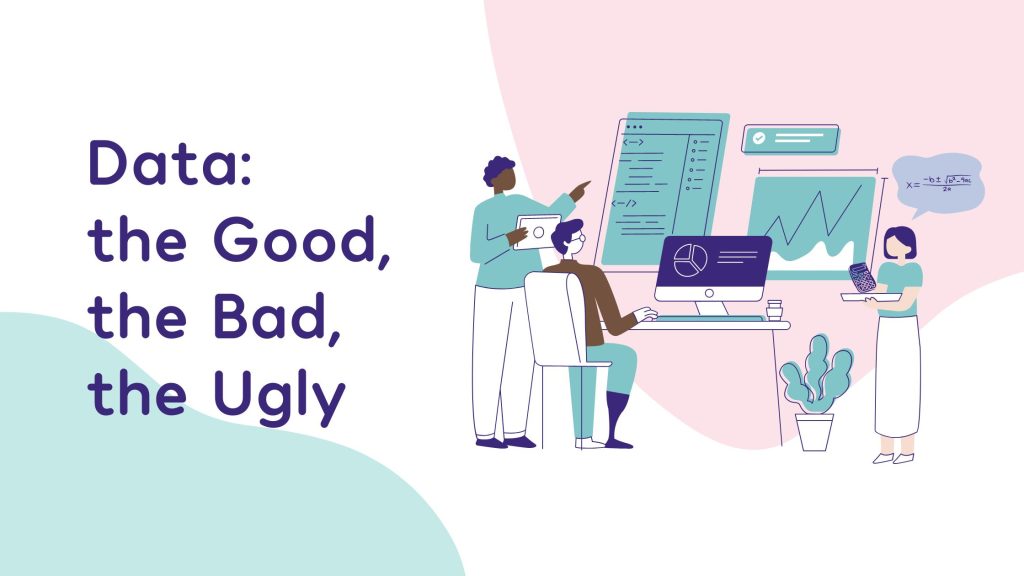
Written by Simon Scriver, Co-Founder of Fundraising Everywhere
The Burning Platforms
With both Facebook and Twitter finding themselves in precarious situations, we’ve all been reminded of the risk of relying on any social media platform to connect with your audience. It’s important that part of our ongoing communications strategy is to encourage followers to also connect and subscribe through other traditional channels such as email and telephone.
It’s not just about the risk of some tech bros destroying a platform you’ve grown to rely on. It’s also about controlling your own data and not leaving your brand’s visibility at the mercy of an algorithm you have no say in - social media notoriously has terrible response rates compared to other media.
We need to be attempting to connect with our audience elsewhere in an ongoing effort to diversify our marketing channels, add people to your database, and collect the data you need to build up a full view of your donors to steward them properly.
Here are 7 ways to do this:
1. Offer a Free Download (Lead Magnet)
Downloadable resources such as fact sheets and helpful guides are a great way to bring value to your social media followers while capturing their contact details and consent. Think beyond your annual reports and consider what resources you have at your fingertips that will appeal to your audience.
Aim to help and educate. Infographics, cheat sheets, and ‘5 ways to…’ assets all do really well here.
With both Facebook and Twitter finding themselves in precarious situations, we’ve all been reminded of the risk of relying on any social media platform to connect with your audience.
2. Host a virtual event
Livestreams and pre-recorded video events allow you to engage supporters and bring them in to your organisation in a way that hasn’t previously been possible. Bring them behind-the-scenes, let them hear from beneficiaries and connect directly to your staff. Plus, they offer lots of touchpoints (ie. registration; before, during and after the event) to prompt your attendees to stay in touch through email, telephone and post.
Talk to our friends at everywhereplus.com to find out how easy this can be and what support is available to you.
3. Surveys
Surveys aren’t just for learning about your audience and letting them know they have a say. They’re also super for moving people off of social media - people love sharing their opinions and a mailing list ‘ask’ fits nicely at the end of your survey questions.
They can be as simple as one quick question - it’s about getting your followers to take that step and allowing you to gather more details.
It’s not just about the risk of some tech bros destroying a platform you’ve grown to rely on. It’s also about controlling your own data and not leaving your brand’s visibility at the mercy of an algorithm
4. Contests
Like surveys…who doesn’t love a contest?
That gift-in-lieu you haven’t been able to use could make a great contest prize. (Don’t forget to check the rules and regulations in your country around the running of online contests).
It might even just be bragging rights…challenge your followers to get every quiz question right…and while they’re there, encourage them to subscribe.
5. Drive to a blog post with data capture
You and your organisation are experts in your field.
If you’re not already, you should be sharing that expertise in regular blog posts. They show your worth and position you as a useful resource.
Blog posts sharing ‘how to’, explainers, FAQs and news/updates are all great ways to get social media followers to click a link and visit your website.
There’s then a great opportunity to suggest your email mailing list within your blog, at the end or through pop-ups.
6. Direct asks
Like all things in fundraising and marketing sometimes it’s as simple as just asking.
Share a direct link to a form to joining your mailing list regularly and give your followers a reason to join.
Make it sound appealing! Rather than joining a mailing list, share the benefits - such as early access, useful information, exclusive perks and a connection to community.
7. Hand raisers
Discover what people care about by running ‘hand raiser’ campaigns; ask them what they care about, what changes they want to see in the world, or run fun polls.
Not only will your list grow from this light-touch and fun interaction, the answers they give help you build a picture of their motivations for that all-important stewardship work.
Check out my full session On Demand:
A Step-by-Step Guide To Growing Your Mailing List
Use discount code ‘ELONMUSK’ to download it for free.

Written by Leesa Harwood, Owner of By The Waves Charity Consulting.
Too much of a good thing
Data is great. It underpins good decision-making. It helps fundraisers to understand supporters, articulate impact, measure success and prioritise the deployment of finite resources. But you can have too much of a good thing. Today we have access to lots of data, but nowhere near enough insight. Alexander Chancellor, former editor of The Spectator said:
“Excessive information creates its own form of blindness to what is actually going on.”
Now, charity professionals are faced with so much data, that they simply can’t see the wood for the trees. They are data blind.
Good, Bad & Ugly
With so much data available, sorting the good from the bad can be challenging. This summer I sifted through over 85 data sources, reports, and documents to compile After the Storm, a summary of key, socio-economic trends and their implications for charity leaders. I am not a data scientist. My background is charity leadership and fundraising, so it was hard going. The more reports I read, the more I realised that data and research can be divided into three categories:
“Excessive information creates its own form of blindness to what is actually going on.”
Alexander Chancellor, former editor of The Spectator
Good
Good data goes beyond a presentation of facts and figures. It evolves into information and then insight. In starts with a fact, then answers the question ‘so what?’ then articulates a clear implication. Good data is based on viable samples, objectivity, and curiosity. It closes the loop between asking a question, analysing facts to find an answer, then adding a big dose of common sense and context to draw a conclusion. It doesn’t just provide information, it delivers enlightenment. Researchers produce good data with one eye on the audience and the problem they’re trying to solve. They adapt their language to present their findings in a relevant and engaging way for their target audience. They know where they can add value and they set out to do so from the start.
Bad
Bad data is everywhere. Vast quantities of facts, figures, graphs, and charts couched in impenetrable language that makes your eyes spin and your ears bleed. Bad data is not necessarily incorrect or corrupt data. It’s just not useful. It is often compiled and presented by incredibly clever people who know their subject matter but not their audience. You have to work hard to optimise bad data. Finding it, translating it, processing it, then applying it to your world or problem. Usually, the ‘so what?’ answer is buried in so much jargon that you give up and go home.
Ugly
This is the worst data of all because can be misleading and fake. It falls into three categories:
1. Clickbait
A headline loosely linked to some random statistics picked from a survey using questionable methodology. Great at grabbing headlines, a data capture tool and a way of inflating click-through statistics.
2. Tiny sample
Survey results with tiny sample sizes are useless. There are over 160,000 registered charities in England and Wales, and yet some high profile, sector bodies persist in presenting conclusive trend data based on samples of less than 50 charities. This is literally not big, and not clever.
3. Pre-determined answer
Usually companies or suppliers commission research or surveys with a specific result in mind. Usually that result nudges you to buy their product. It’s unfair to suggest that all supplier-commissioned research falls into this category. But if a business produces a survey that aligns with its marketing content, it’s always sensible to cross check with an alternative data source just in case.
Data is fickle. With enough manipulation, the right lens and selective bias you can make data say pretty much anything.
Torture the data and it will confess to anything
Data is fickle. With enough manipulation, the right lens and selective bias you can make data say pretty much anything. But as fundraisers, we rely on it to keep us current, efficient and honest so it is important that we know where to go to find good data and how to use it properly. By learning to recognise the good, the bad and the ugly fundraisers will always use the right data to answer the right questions at the right time.






